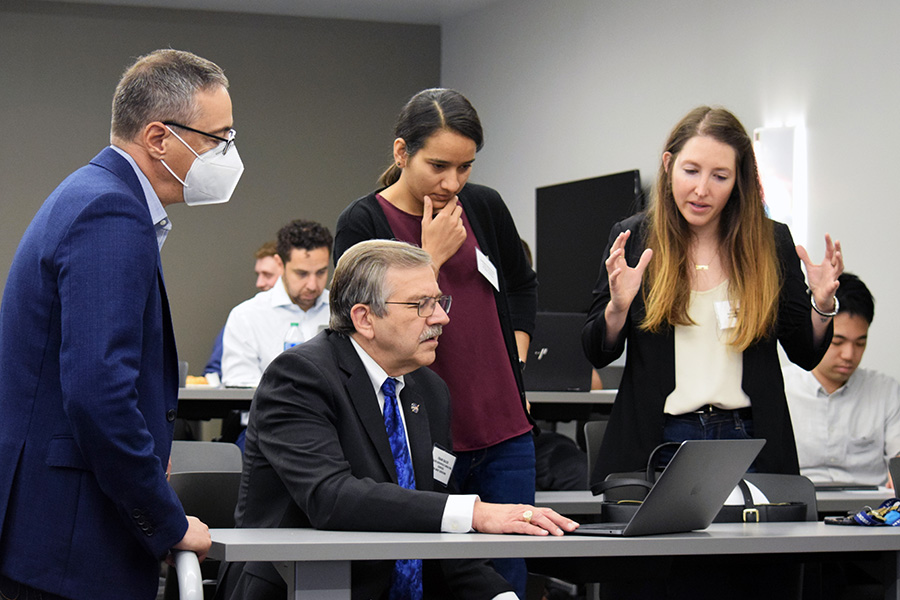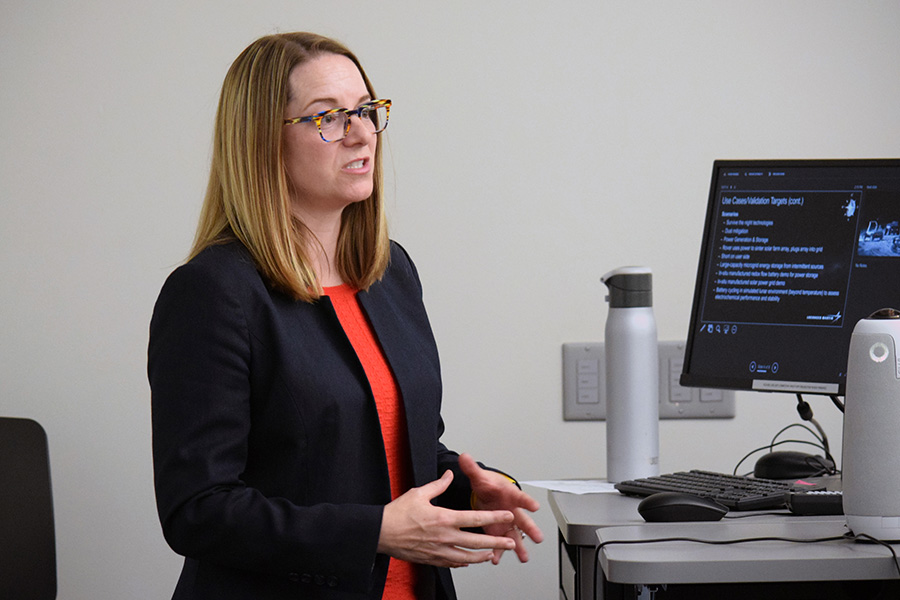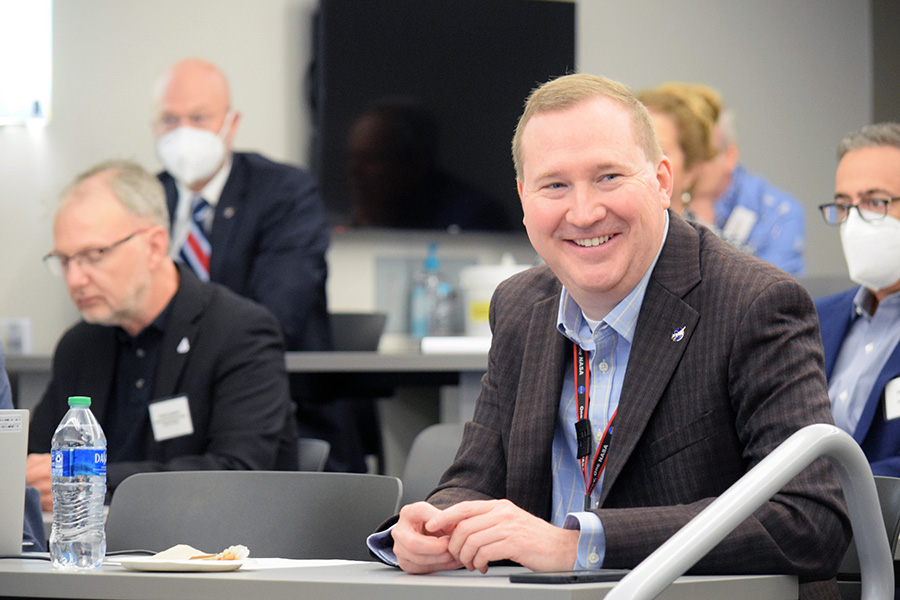Cislunar Initiative's 2-Day Summit Explores a Proving Ground Facility for Space Operations
| Author: | Alan Cesar |
|---|
Purdue AAE Brings Aerospace Industry and Government Together to Consider Space Arena Concept

The Cislunar Summit at Purdue opened with one big question: What would it take to hold this very conference on the moon, or mars, or an asteroid?
Purdue Aeronautics and Astronautics Professor Timothée Pourpoint, in welcoming guests and presenters to Chaffee Hall at Purdue's Zucrow Labs, pointed out that nearly every resource needed for human space exploration, from water and coffee beans to solar panels and construction materials would ideally be produced in situ. It's not practical to transport these things from Earth in perpetuity, so if you can’t produce it there, you’ll have to do without.
Bringing these possibilities down to Earth led Pourpoint to the central purpose of the summit: Determining the technical requirements for such a research facility to find these solutions.

Pourpoint and Kathleen Howell, the Hsu Lo Distinguished Professor of Aeronautics and Astronautics, are approaching stakeholders in aerospace to gauge interest in a Space Arena — a large research complex that would house large test environments replicating the harsh conditions of space at scale. Many small test environments exist around the world, but one as large as Pourpoint and Howell are proposing would be necessary to facilitate the further exploration of space and use of its resources.
"We've been exploring space, and now we're looking into how to make use of space. That's new, but what's not new is that space is hard,” said Bill Crossley, the J. William Uhrig and Anastasia Vournas Head of the School of Aeronautics and Astronautics. “We need to test things as close to space as we can get. That's what we're trying to develop further here at Purdue.”

By meeting with leading figures from NASA and major private aerospace companies, Purdue researchers seek to answer the practical questions that government and industry organizations require to better approach those challenges.
Such requirements include, but are not limited to the following concerns: the size and type of vacuum chambers necessary; the safe simulation of surface materials for construction and mining operations; rendering of the conditions necessary to test next-generation propulsion technologies; and other practical questions regarding research involving both theoretical debate as well as verification and validation. Integrated systems analysis is also a critical piece.
“We're starting to see commercial guys thinking of how to operate in cislunar space. It's no longer going to be government funding-driven — the industry will play a very significant role. This is the transition we're in,” said Dennis Paul, a senior project leader from The Aerospace Corporation. “Testbeds and proving grounds will be vital to the future of this industry.”
